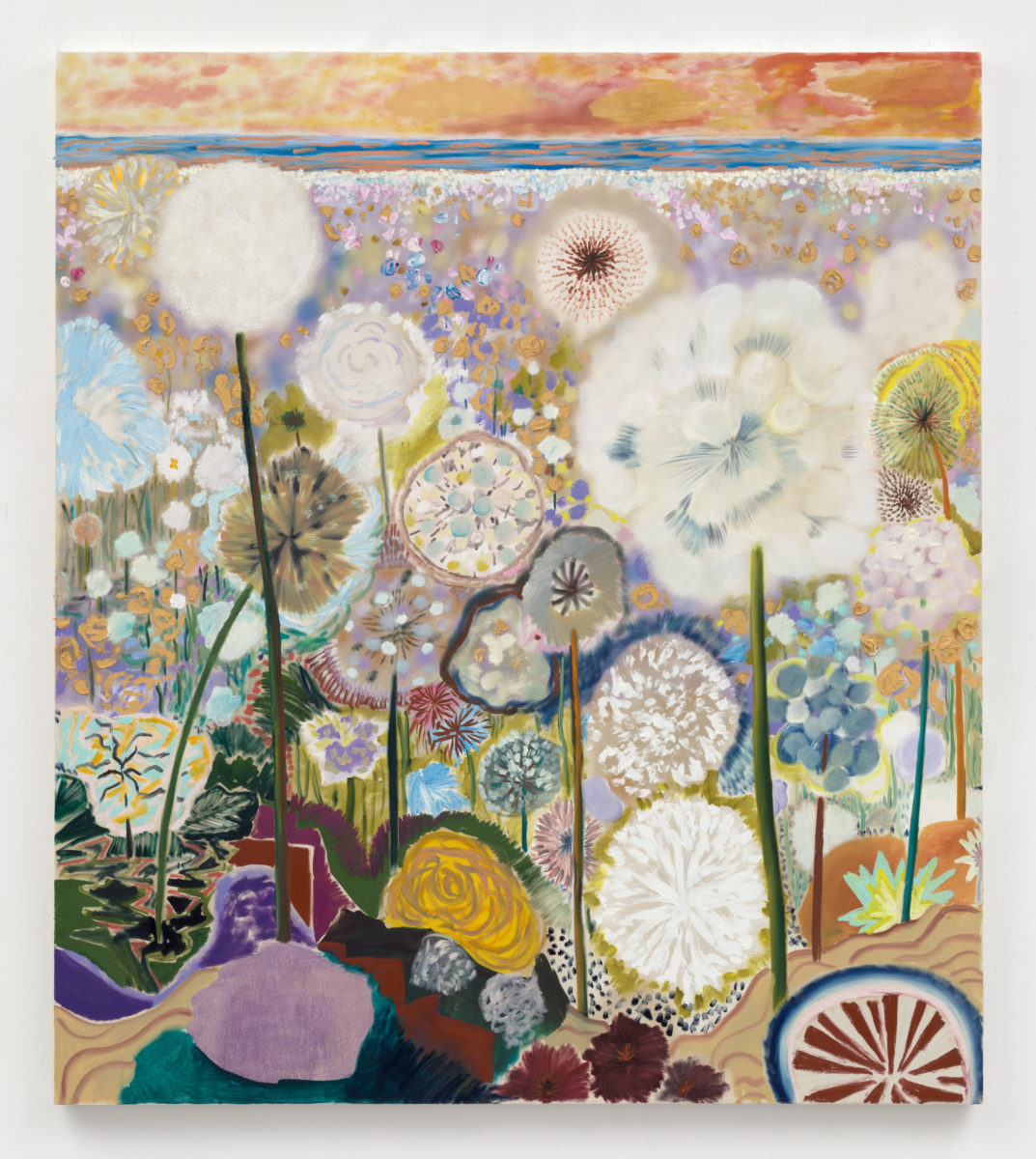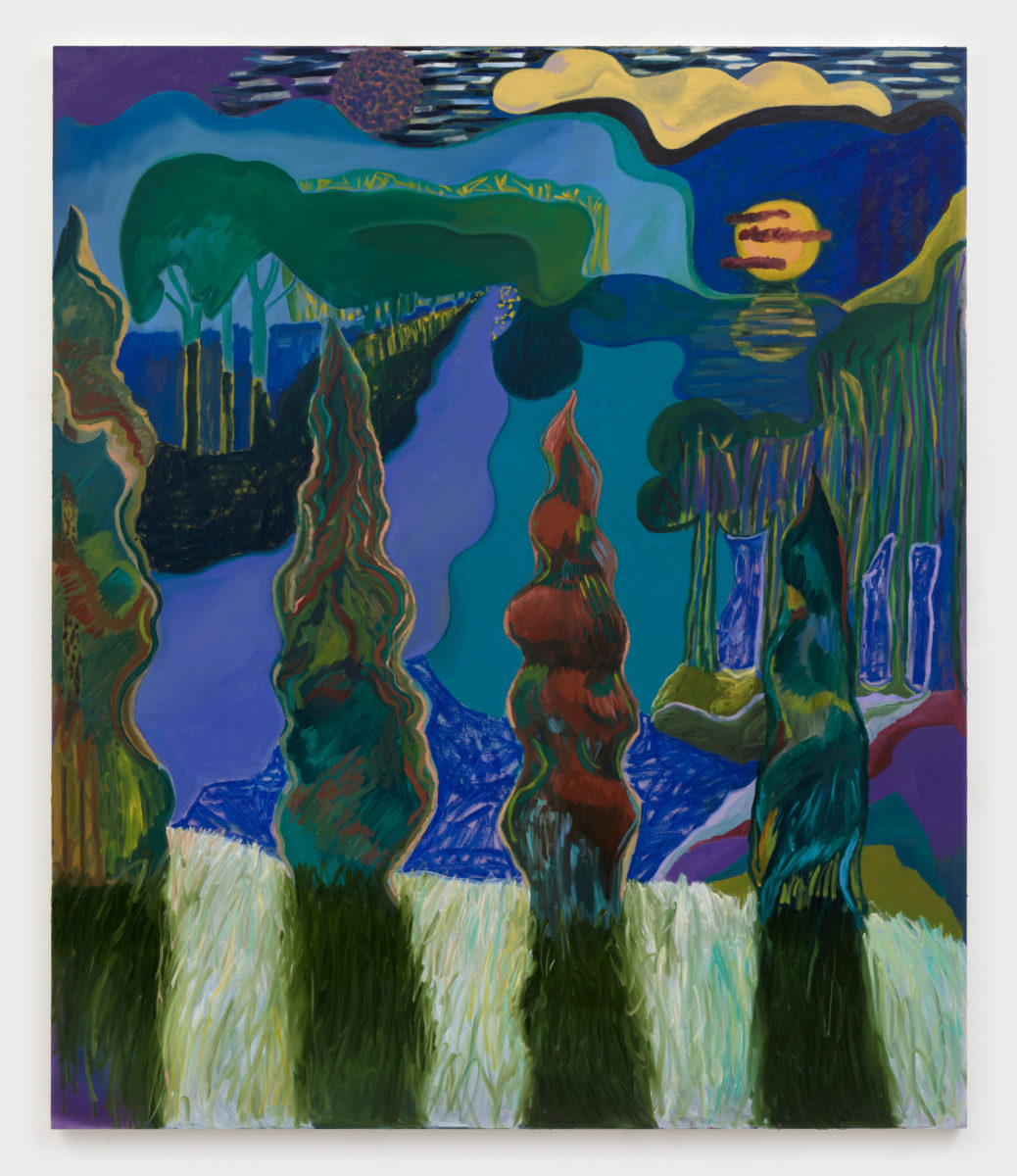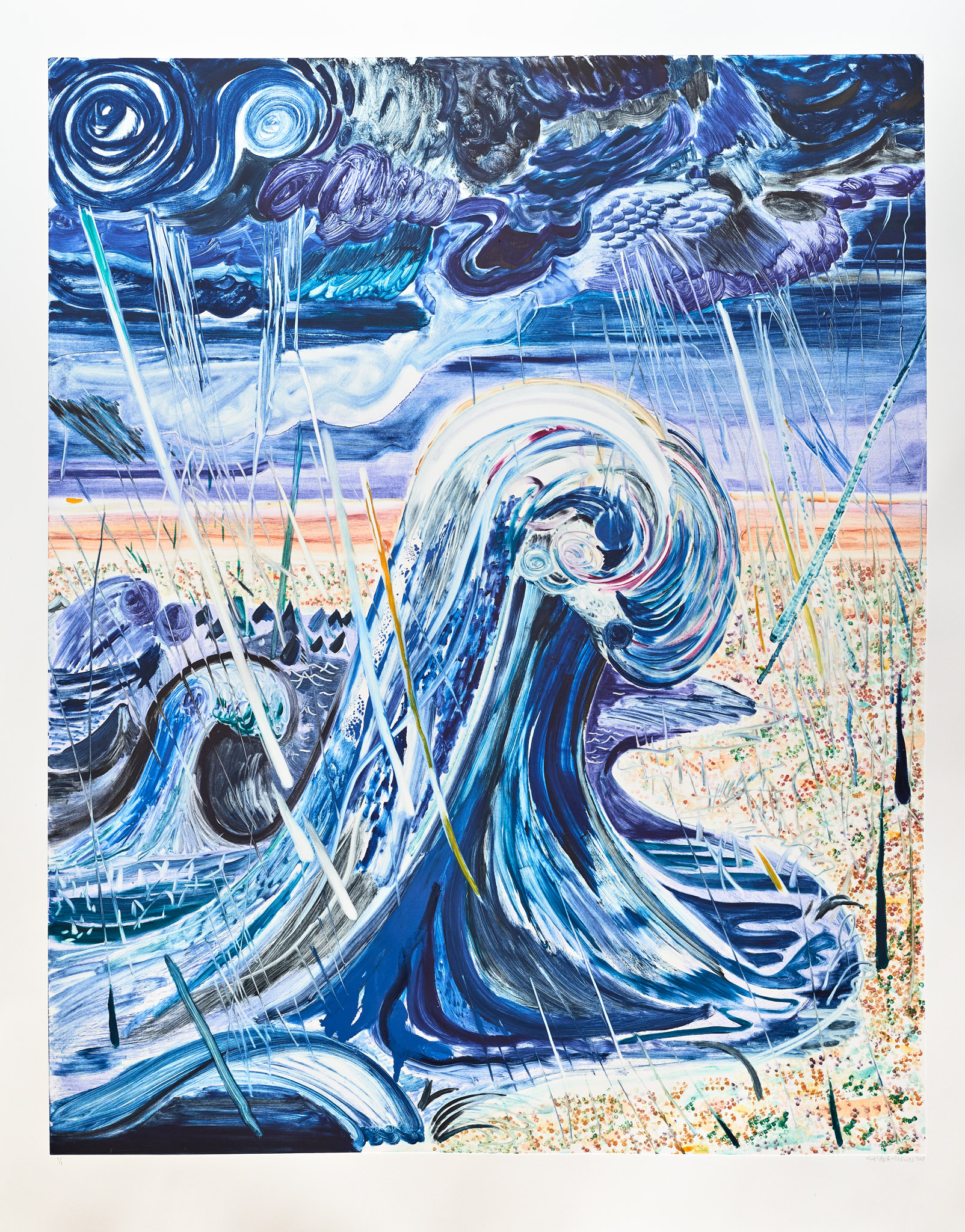
Shara Hughes’ paintings are vibrant and turbulent, a riot of colour, depicting imagined spaces which appear as semi-fictional landscapes. Trees, lakes and rolling hills are all present in the work, grounding these scenes in something tangible and physical, but there are fantastical elements also, with explosive tones and formal flourishes which sit at odds with the landscapes we might encounter out in the world. Despite the densely detailed compositions, these works are created instinctively, and reflect the American artist’s internal state. She is currently showing a selection of works at Pilar Corrias gallery in London.
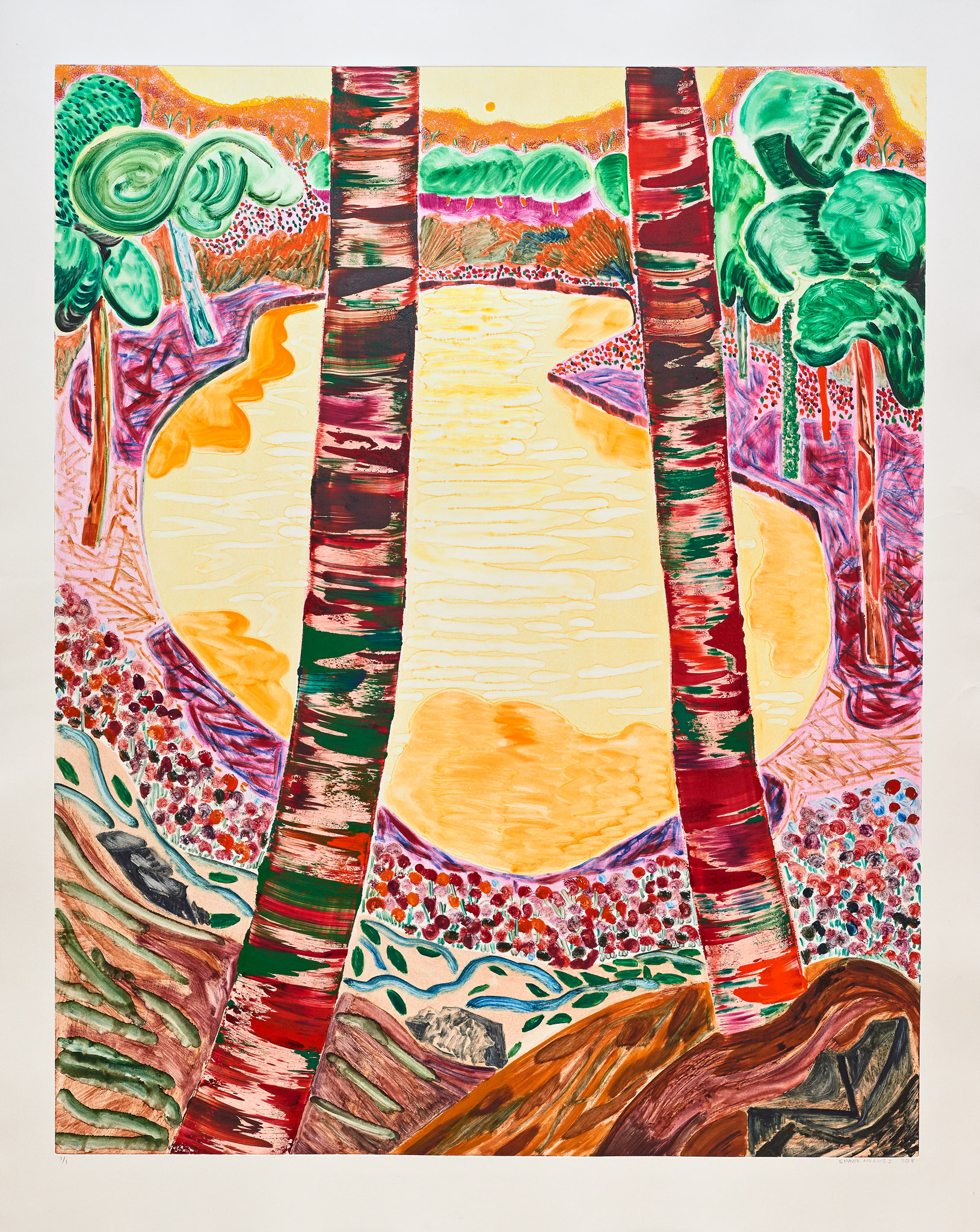
You have previously said that don’t tend to have a plan when you begin a painting, and that they evolve quite instinctively. How does this process feel while you are working?
I have to be very present while I’m working in that kind of way. I really want the paintings to feel fresh and honest, so I feel like when I work from nothing, it’s as if I’m drawing for the first time. If I make a mistake its all there on the canvas. I like how raw they can feel when I’m just in it in that way. I have to react to each little thing from the beginning so the paintings can hold some kind of extra presence in them in that way. If I work from a drawing, I feel less connected and almost like I’m just executing the painting and not actually being a painter in the present moment.
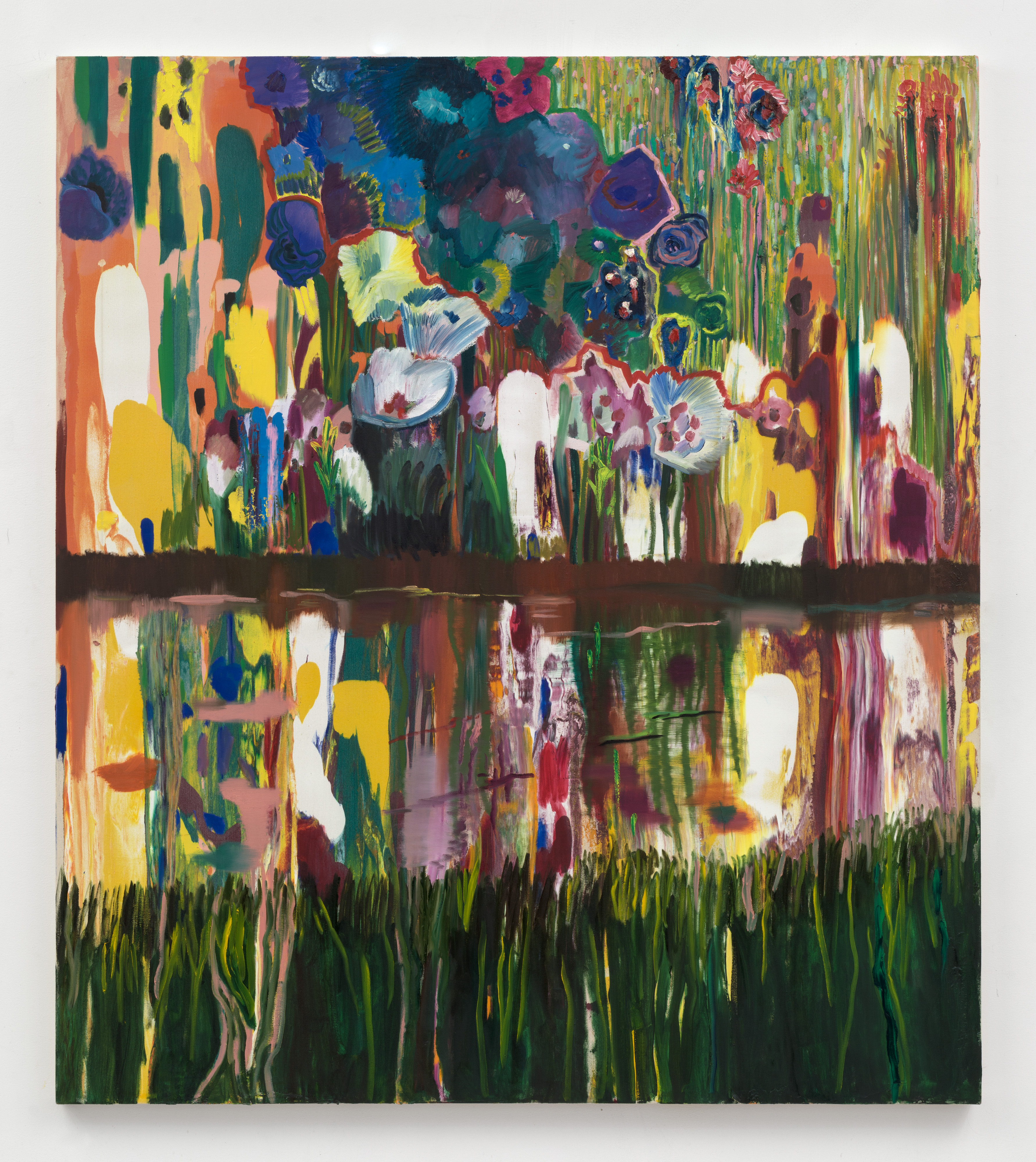
This looser method has been described as a way of breaking out of a conventional and ordered painting process, as reflected in the wildness of the landscapes you depict. It has also been suggested that the works explore a psychological space for you. Do you feel you need to be in a certain headspace to start a work, or do you bring whatever is going on for you internally onto the canvas?
I do feel like I have to be in a certain headspace but I don’t try and control it. My true self will be reflected in the work no matter what so I just need to be ready to be me, whatever form I show up in. Sometimes it’s emotionally reflected clearly with expressive marks, and sometimes the painting reveals to me later on what I was going through. I learn so much about myself each time I make a painting.
“My true self will be reflected in the work no matter what so I just need to be ready to be me in whatever form I show up in”

Why do you think the natural world has historically been so symbolic of human psychology in visual culture?
I think that nature reflects emotions in so many ways. Beauty, pain, peace, sadness can all be seen in one day with the passing of time or with a weather pattern. Nature is constantly changing, you will never see the same flower twice in the exact same way. The light changes; its growing, or dying, and moving. This is very reflective of humans and psychology. The way we see something even changes when we go back to it in another headspace. I could see a tree as beautiful on my best day but the same tree as haunting on my worst day.
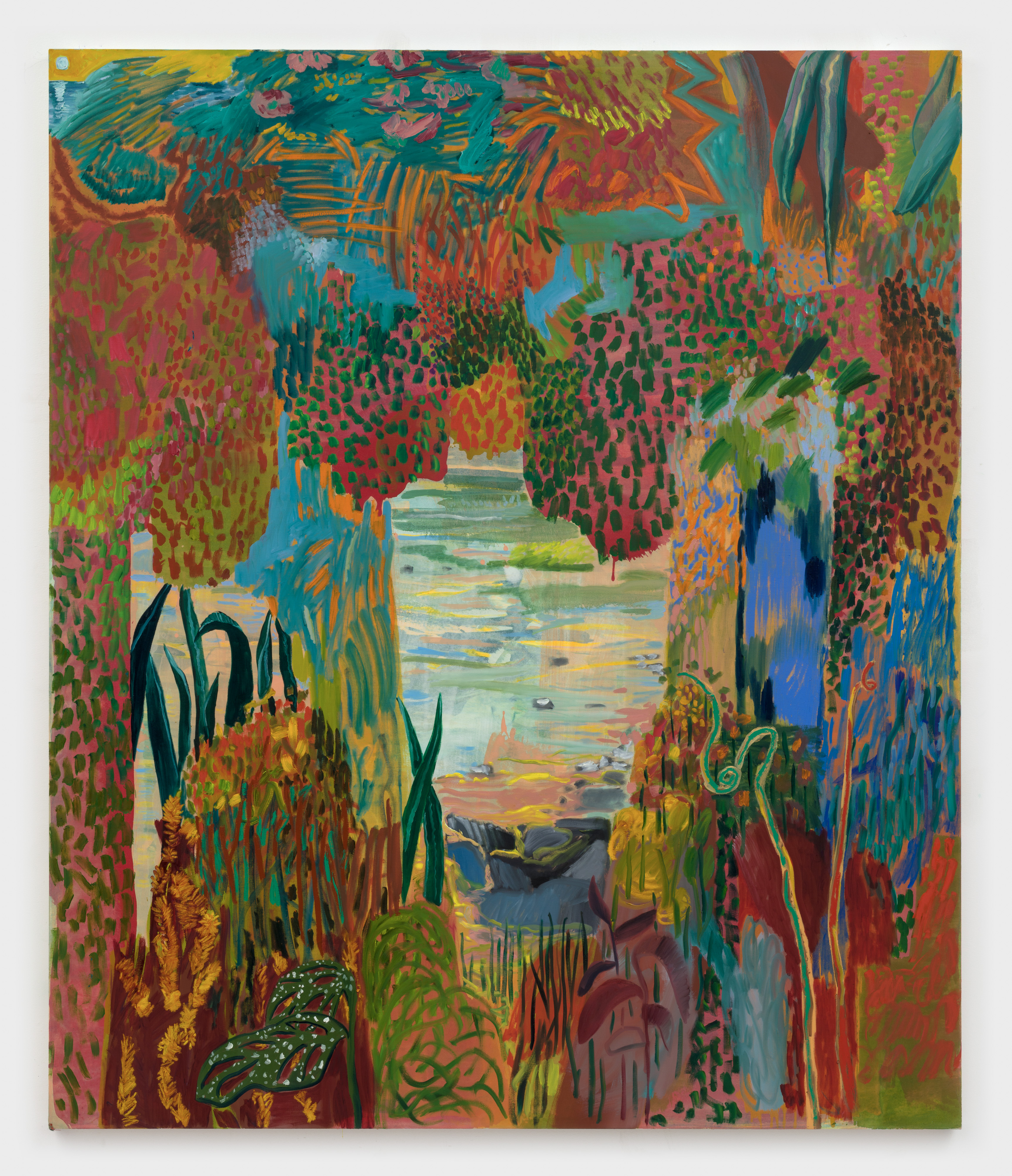
“I think that nature reflects emotions in so many ways. Beauty, pain, peace, sadness can all be seen in one day”
What is your favourite part of working on a painting?
Oh gosh, I think it would have to be the middle part when it starts to reveal itself. Starting a painting is always really hard. I tend to describe it as “playful” when I start a painting but the first things I do on a canvas actually holds a lot of weight so it quickly flips around from playful to frustrating. Once I get halfway through the painting I really start to see where its going and then it feels exciting to see how I end up finishing it.
- Left: Sweet Sweet Fantasy, 2019; Middle: A Story About The Dark, 2019; Right: Bleeding Heart Finding The Light, 2019
What does drawing bring to your painting practice, and vice versa?
I make drawings at home outside of my studio. I like to be able to be comfortable and make mistakes and come up with new playful marks and moves when I’m drawing. I often bring them back into the studio and hang them up while I’m painting. I don’t work from them, but I like the fresh energy of them and I feel like they remind me to loosen up. Because I start with raw canvas, the first things I put down feel as permanent as drawing on paper. You can’t really go backwards working that way. I like that because I have to be confident and I have to stick to whatever marks I make first, as I would with my drawings.
